Baccarat originated in Italy during the 15th century and quickly gained popularity among European nobility. Over time, the game spread globally, adapting to various cultural influences and evolving into different regional variations. Despite its long baccarat history, Baccarat has retained its allure and continues to be a beloved choice for gambling enthusiasts worldwide.
To truly appreciate the intricacies and nuances of Baccarat variations, it is essential to understand the game’s rich baccarat history. Exploring the roots of Baccarat allows us to grasp its cultural significance and how it has evolved. By delving into its past, we gain valuable insights into the regional adaptations, rule variations, and betting strategies employed in various Baccarat games.
The Early Beginnings

Baccarat’s Contested Origins
Baccarat history has been debated among historians and gambling enthusiasts alike. While there is no definitive answer, two main theories have emerged regarding the contested origins of the game: the possible Italian roots and the French connection.
Possible Italian Roots
One theory suggests that Baccarat originates in Italy, specifically in the 15th-century Italian game called “baccara.” The word “baccara” translates to “zero” in Italian, referring to the value of certain cards in the game. This Italian game shares some similarities with modern-day Baccarat, such as the goal of achieving a hand with a value closest to nine.
The French Connection
Another theory suggests that baccarat history originated in France rather than being imported from Italy. According to this theory, the game was introduced in the 19th century under the name “Chemin de Fer,” which means “railway” in French, possibly referencing the swift movement of the shoe that holds the cards.
During this time, Baccarat gained immense popularity among the French aristocracy and became a favourite pastime in exclusive gambling salons. The game’s appeal extended beyond the borders of France, eventually reaching other European countries and even making its way to the United States.
Early Rules and Gameplay in Baccarat
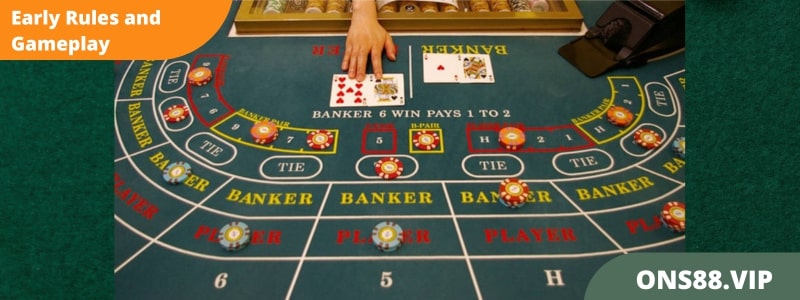
In its early iterations, Baccarat featured rules and gameplay that closely resemble the fundamentals of the game as played today. The game’s objective was to achieve a hand with a total value as close to nine as possible. Initially, only two hands were dealt – one for the player and one for the banker. Each hand received two cards, and their values were determined by the sum of their individual card ranks.
Cards numbered 2 to 9 held their face value, face cards and tens were worth zero, and aces counted as one. If either hand achieved eight or nine, it was considered a “natural” and automatically won. If both hands had totals below eight, additional rules governed whether a third card was drawn. These early rules and gameplay mechanics formed the foundation for the evolution and variations of Baccarat that emerged over time.
Baccarat History in Europe
Baccarat’s Arrival in France
Baccarat is believed to have reached France in the late 15th century, possibly brought by Italian soldiers during the reign of Charles VIII. Initially known as “baccara” or “baccarat,” the game quickly gained attention among the French nobility and upper classes. Over time, it underwent modifications and refinements to suit the preferences of the French elite.
Popularity among French Nobility
Baccarat’s elegant and captivating gameplay captured the fascination of French nobility. The game became a favourite pastime among the aristocracy, who often indulged in high-stakes gambling sessions in exclusive gambling salons. Its association with wealth, sophistication, and prestige further cemented Baccarat’s reputation as a game for the elite.
Evolution of ‘Chemin de Fer’
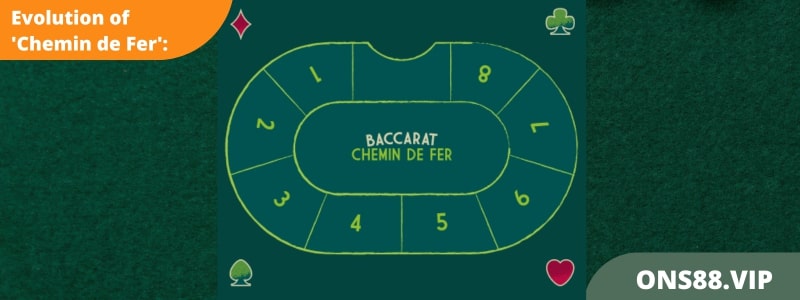
In the 19th century, Baccarat evolved into a variation known as “Chemin de Fer,” meaning “railway” in French. This version involved players taking turns acting as bankers, dealing cards to themselves and their opponents. It introduced a sense of interaction and strategic decision-making, as players could choose whether to draw a third card or stand with their initial hand. Chemin de Fer’s popularity spread beyond France, gaining traction in other European countries, such as England and Germany.
Baccarat Across the Channel: Its Journey in Britain
Introduction and Reception
Another fun fact about baccarat history is that baccarat was introduced to Britain during the 19th century, likely through interactions with French nobility and the influence of the thriving gambling culture in France. The game quickly caught the attention of the British upper class and became a prominent feature in exclusive gambling establishments and private clubs. The allure of Baccarat’s elegant simplicity and the potential for high stakes made it a favoured pastime among the British elite.
Evolution of ‘Punto Banco’
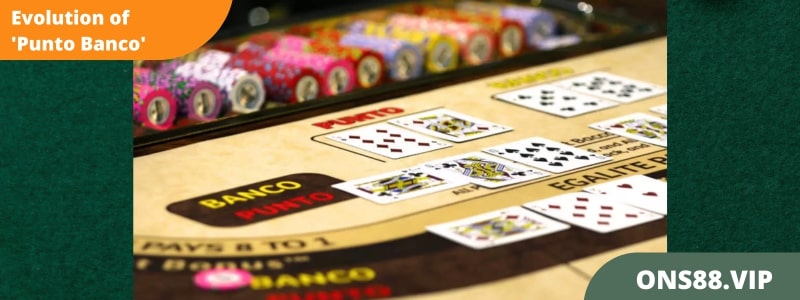
In Britain, a specific variation of Baccarat known as ‘Punto Banco’ emerged as the most popular form of the game. ‘Punto Banco’ is often considered the Americanized version of Baccarat, as it was further refined and standardized to cater to the preferences of American gamblers. The name ‘Punto Banco’ refers to the two primary betting options in the game – ‘punto’ for the player and ‘banco’ for the banker. This simplified version of Baccarat gained widespread recognition and became the dominant variant played in casinos across Europe and eventually in the United States.
Baccarat’s Spread Across Europe
Baccarat’s spread across Europe was driven by its allure, captivating players from various countries and cultures. Following its introduction in France and subsequent popularity among the French aristocracy, the game quickly crossed borders and found enthusiastic reception in other European countries.
From the prestigious gambling salons of England to the opulent casinos of Germany, Baccarat became a favoured pastime among the European elite. Each region added its unique touch, developing distinct variations such as Chemin de Fer, Baccarat Banque, and Punto Banco.
The game’s ability to adapt and resonate with different societies contributed to its widespread presence and enduring legacy as one of Europe’s most beloved card games.
Baccarat History Crosses the Atlantic
Introduction of Baccarat in the American
Baccarat made its way to the United States during the 19th century, introduced by French and British immigrants who brought the game across the Atlantic. Initially, Baccarat gained traction among the elite social circles and gambling establishments in major American cities, such as New York and New Orleans.
Early Adoption and Changes
As Baccarat became more popular in the United States, it underwent modifications to align with American gambling preferences and regulations. The game’s early adopters adjusted the rules and introduced new betting options to cater to American players. These changes aimed to enhance the game’s appeal and increase its entertainment value in the American gambling scene.
Rise of ‘American Baccarat’
The modifications and adaptations made to Baccarat in the United States led to the rise of a distinct variant known as ‘American Baccarat’ or ‘Mini-Baccarat.’ This version featured simplified rules, faster gameplay, and lower betting limits, making it more accessible and appealing to a wider range of players.
‘American Baccarat’ became immensely popular in American casinos, drawing in high rollers and casual gamblers. Its success further solidified Baccarat’s place in the American gambling landscape and its status as a classic casino game enjoyed by players nationwide.
Baccarat in Cuba and the Advent of ‘Mini Baccarat’
Baccarat’s popularity extended to Cuba, where it gained a strong following among wealthy tourists and local players in the early 20th century. During this time, ‘Mini Baccarat’ emerged as a variant that offered a more compact and faster-paced version of the game. ‘Mini Baccarat’ featured lower betting limits and simplified rules, making it accessible to a broader range of players. This adaptation further contributed to Baccarat’s widespread appeal and cemented its position as a favourite casino game in Cuba and beyond.
Baccarat’s Popularity in Modern American Casinos
Baccarat has become popular in modern American casinos, particularly among high-stakes players. The game has become synonymous with glamour and exclusivity, with dedicated Baccarat rooms and high-limit areas catering to discerning gamblers.
The allure of Baccarat’s simplicity and the potential for large winnings have attracted a loyal following, resulting in an increased presence of the game on casino floors across the United States. Its popularity in modern American casinos continues to grow, solidifying Baccarat’s status as a timeless and captivating gambling option for players seeking excitement and sophistication.
The Asian Baccarat Phenomenon

Introduction of Baccarat in Macau
Baccarat was introduced to Macau, a special administrative region of China, during the mid-20th century when the city began transforming into a renowned gambling destination. Macau, often called the “Las Vegas of Asia,” embraced Baccarat as its flagship game, quickly becoming the region’s dominant casino offering.
Baccarat’s Role in Macau’s Casino Boom
Baccarat was pivotal in fueling Macau’s casino boom, contributing significantly to the region’s economic growth. The game’s popularity attracted a massive influx of tourists, predominantly from mainland China, who flocked to Macau to indulge in Baccarat and try their luck. The high-stakes nature of Baccarat and its association with luck and prosperity resonated deeply with Asian culture, making it a cultural phenomenon and a key driver of Macau’s casino industry.
Baccarat in the Modern Era
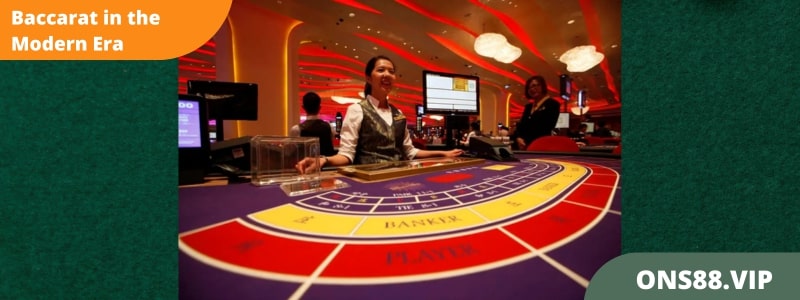
The Impact of Online Casinos on Baccarat
The rise of online casinos has significantly impacted the accessibility and popularity of Baccarat. Online casinos in Malaysia have allowed players to enjoy the game from the comfort of their homes, eliminating geographical limitations and allowing for convenient gameplay at any time. This increased accessibility has attracted a broader audience to Baccarat, expanding its reach beyond traditional casino-goers.
Online Baccarat Games
Online casinos in Malaysia offer various Baccarat games to cater to different preferences and playing styles. Players can choose from various variations, including Punto Banco, Chemin de Fer, and Mini-Baccarat, each offering unique rules and gameplay mechanics. Online Baccarat games often come with customizable features, such as different table limits and side bets, providing players with a personalized gaming experience.
Live Dealer
One of the notable advancements in online Baccarat is the introduction of live dealer games. Live dealer Baccarat combines the convenience of online gambling with the immersive experience of playing at a physical casino. Through live video streaming, players can interact with real-life dealers, observe the card shuffling and dealing in real-time, and participate in the game as if seated at a traditional Baccarat table. Live dealer Baccarat enhances the authenticity and social aspects of the game, bridging the gap between Malaysian online and land-based casino experiences.
Baccarat’s Presence in Pop Culture
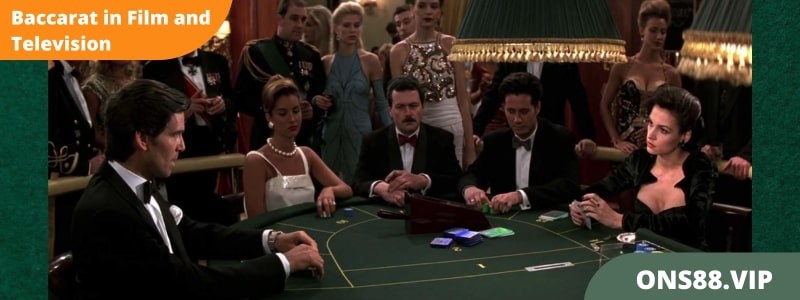
Baccarat in Film and Television
Baccarat has made notable appearances in several films and television shows, often portrayed as a game reserved for the elite and glamorous. One of the most famous examples is the James Bond franchise, where Baccarat, particularly the variant Chemin de Fer, has been featured in several Bond movies, including “Dr. No” and “Casino Royale.”
These portrayals have contributed to Baccarat’s association with sophistication, luxury, and espionage. Other films and TV shows, such as “Maverick” and “Ocean’s Twelve,” have also showcased Baccarat as a captivating and high-stakes gambling game, heightening its presence in popular culture.
Baccarat in Literature
Baccarat has appeared in various literary works, adding a touch of intrigue and drama to the narratives. In Ian Fleming’s James Bond novels, Baccarat plays a significant role in the spy’s adventures, showcasing his skill, wit, and ability to navigate the world of high-stakes gambling.
Other authors, such as Fyodor Dostoevsky in “The Gambler,” have explored the psychological and addictive nature of Baccarat, delving into the character’s motivations and the consequences of their actions. These literary references have contributed to Baccarat’s portrayal as a captivating game intertwined with human emotions and the pursuit of fortune.
The Legacy of Baccarat

How Baccarat Has Influenced Other Casino Games
Baccarat history has significantly influenced other casino games, shaping their rules, gameplay, and popularity. One notable example is the game of Blackjack, which incorporates elements from Baccarat, such as the goal of achieving a specific hand value without going over and comparing hands between the player and the dealer.
Additionally, the “banker” concept in Baccarat has influenced various casino games that feature a house or dealer position, where players can bet against the house or the dealer’s hand. The simplicity and elegance of Baccarat have served as a source of inspiration for game designers, contributing to the development and evolution of other casino games.
The Future of Baccarat
The future of Baccarat is expected to be promising as the game continues to evolve and adapt to the changing preferences and technology of the gambling industry. With the rise of online casinos, Baccarat’s accessibility has increased, allowing a wider audience to enjoy the game from anywhere at any time. Incorporating live dealer Baccarat in online platforms has enhanced the immersive experience and added a social aspect to the game.
Conclusion
Understanding baccarat history provides valuable insights into its enduring appeal and cultural significance. It showcases the game’s adaptability, as it has influenced other casino games and left its mark on pop culture. Baccarat’s evolution highlights its ability to transcend boundaries and captivate players across generations, ensuring its place as a timeless and cherished gambling experience.
FAQs about Baccarat History
1. Why is Baccarat so popular in Asia?
Baccarat history and popularity in Asia can be attributed to cultural factors and preferences. The game is seen as a symbol of luck, prosperity, and high social status, which resonates deeply with Asian cultures. The game’s simplicity and fast-paced nature appeal to Asian players who enjoy the excitement and thrill of high-stakes gambling.
2. How has Baccarat evolved?
Baccarat has evolved significantly over time. From its contested origins to its spread across Europe and eventual popularity in the Americas and Asia, the game has seen various variations emerge, such as Punto Banco, Chemin de Fer, and Mini-Baccarat. Baccarat has also adapted to modern times with the advent of online casinos, offering accessible gameplay options and live dealer experiences that bridge the gap between virtual and traditional gaming.
3. What are the main differences between the versions of Baccarat?
The main differences between the versions of Baccarat lie in their rules and gameplay mechanics. Punto Banco, the most popular variant, is a simplified version played against the house, where players bet on either the player’s hand (‘punto’) or the banker’s hand (‘banco’).
Chemin de Fer involves players taking turns acting as the banker, while Mini-Baccarat offers lower betting limits and faster gameplay. These variations have distinct rules regarding card drawing and player participation, providing unique experiences while preserving the core objective of achieving a hand total closest to nine.
- Episode 8: Roulette Fibonacci Betting System - July 5, 2023
- Episode 8: Baccarat System – Understanding Different Strategies and Approaches - July 5, 2023
- Episode 8: Top 10 Blackjack Tips For Big Winning - July 5, 2023













![Promotion BK8_[GIF]_EN_CN_MY_SG_250x250](https://gamblero.co/wp-content/uploads/2023/09/BK8_GIF_EN_CN_MY_SG_250x250.gif)

